Photographs of OIF III
[
index]
[41,741 page views]
The U.S. Army soldier conducts patrols for reasons that vary from gathering intelligence in assigned sectors to conducting atmospheric evaluations to determine the "feel" of the populace. Patrols inspect the progress of improvement programs such as sewage clean up, school construction, factory maintenance, functional inspection of service utilities, etc. Counter mortar operations maintain our own safety on the FOB (Forward Operating Base) by rooting out potential mortar and rocket attack locations before the insurgents can utilize them. We provide security on the major traffic routes to ensure the safety of our resupply trains and provide a sense of security for local Iraqis to conduct their lives. The list goes on endlessly as the mission requirements change almost daily.
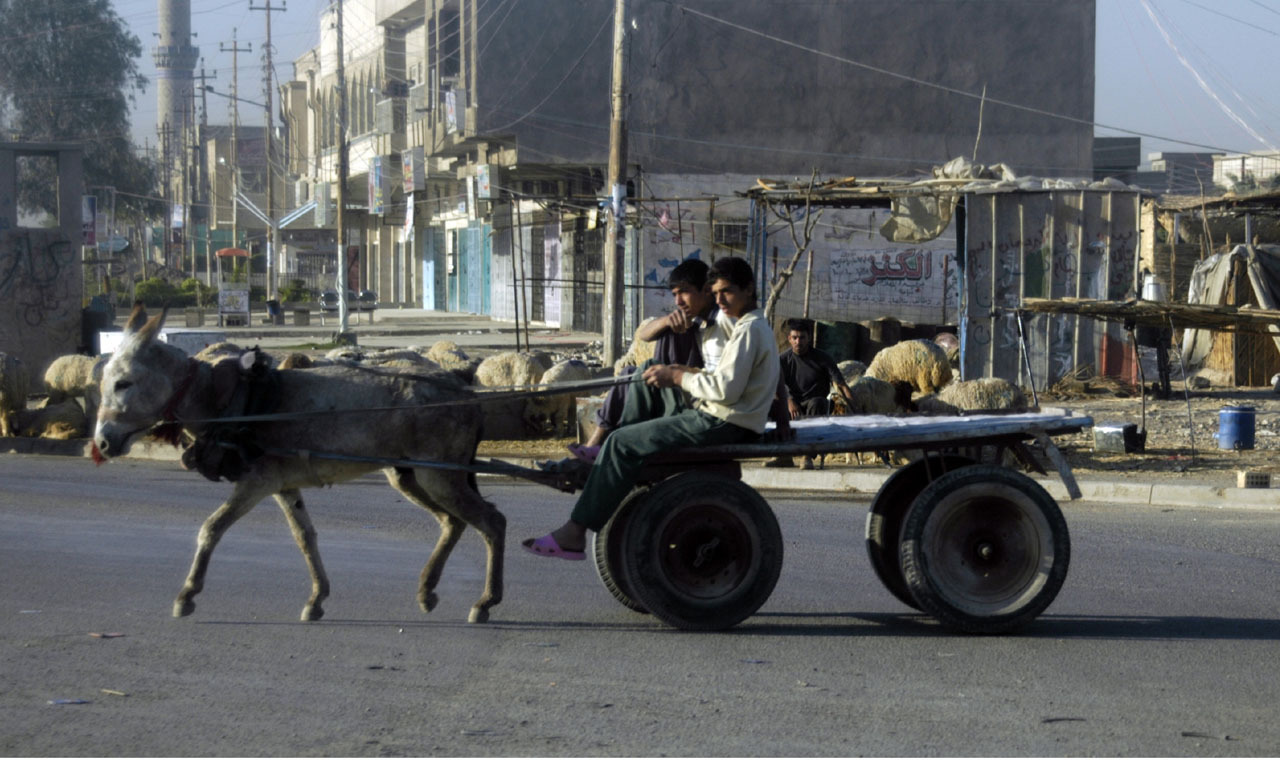 |
| Most Iraqis keep to themselves and continue to live their lives. The American soldier attempts to keep this way of life safe and secure while their nation rebuilds itself from the ground up. | |
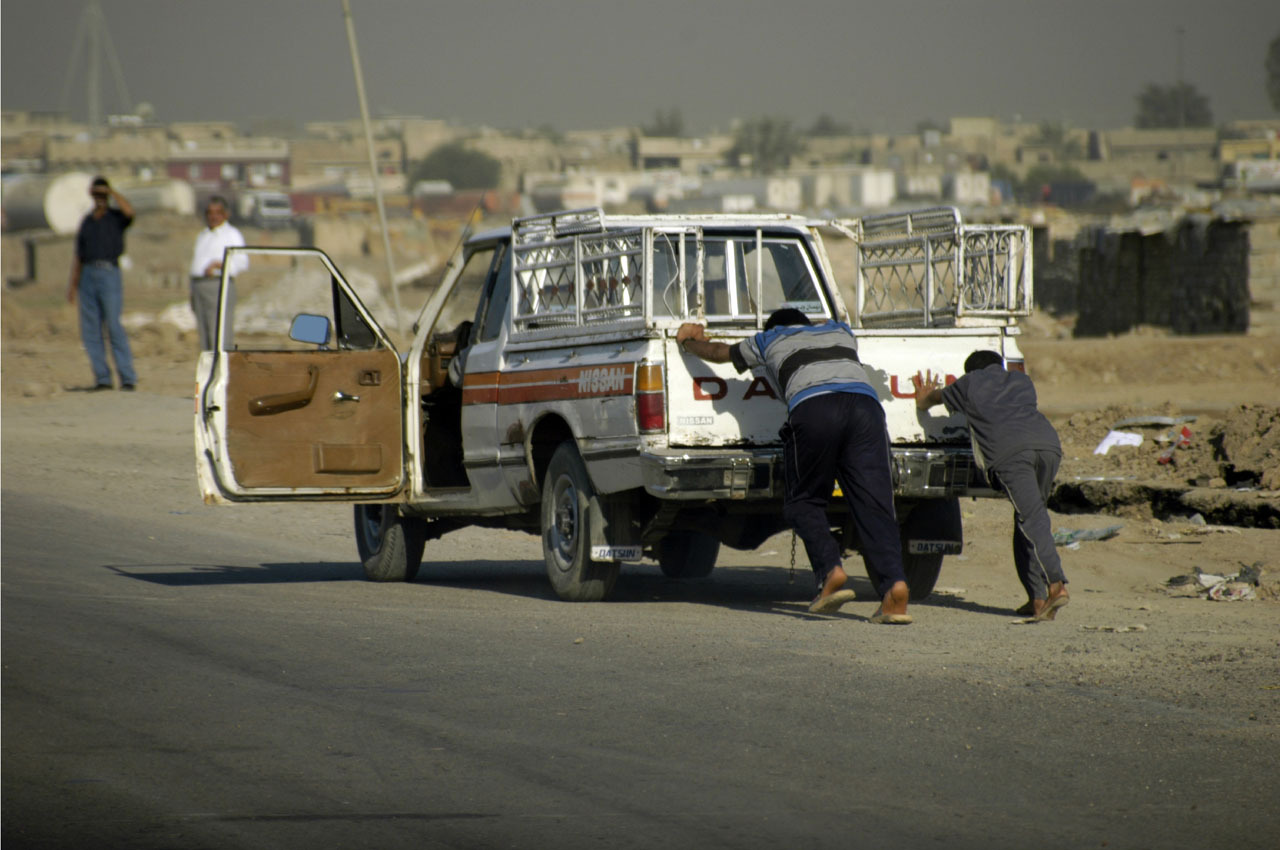 |
| Keeping the roads clear of disabled vehicles helps to ensure safety for local nationals. Broken cars were frequently used to hide both explosives and as fragmentation devices to multiply damage. | |
Each patrol’s consistency really depends on the type of unit involved. However it is common to find a mixture of M1A1 Abrams Tanks, M2A2 Bradley Fighting Vehicles and M1114 Armored HMMWVs (High Mobility Multi-Wheeled Vehicle … also known as the "humvee"). The days of relatively free traveling through Baghdad that followed the ground war are long gone. Now, basic requirements include completely armored vehicles capable of stopping small arms fire along with mandatory external weapons platforms and tracking equipment. These measures generally work and have saved countless American lives. Depending on chance and circumstance, even the armored M1114 has withstood blasts from artillery rounds exploding from beside and even beneath the vehicle. Do not confuse "survive" with fully mission capable. The soldiers inside still sustain injury from the shock wave’s concussion, vehicle rollover and impacts with equipment from within the vehicle. Often times, a vehicle will be removed from the inventory shortly after sustaining such a degree of battle damage. Yet there are plenty of cases where an M1114 has rolled away from the kill zone on the shredded run-flat tires while dragging various damaged and dangling pieces of itself only to be restored to patrolling status within days.
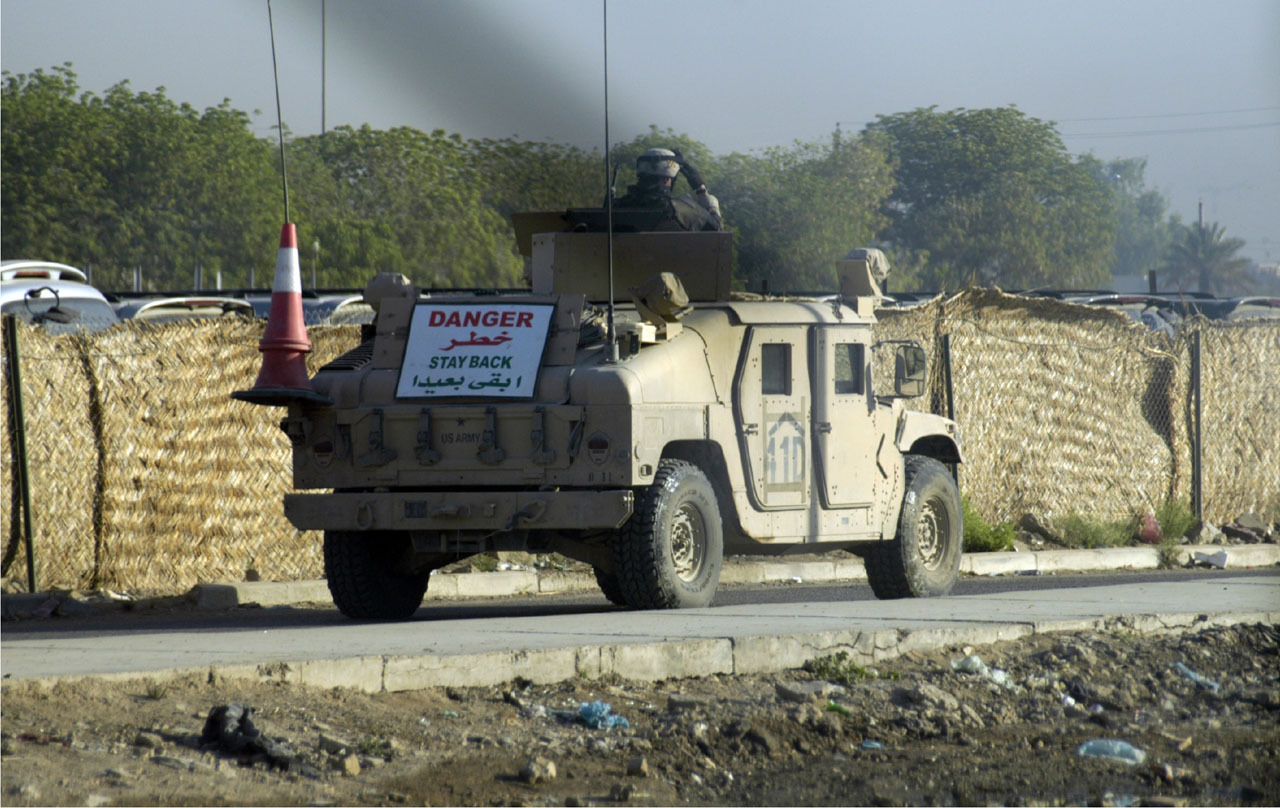 |
| An M1114 armored HMMWV patrols through Saydiyah, a residential and business district along Route Irish, the primary highway through Baghdad leading into BIAP (Baghdad International Airport) and the international zone. Route Irish is amongst the most frequently bombed target for the insurgents in all of Iraq. | |
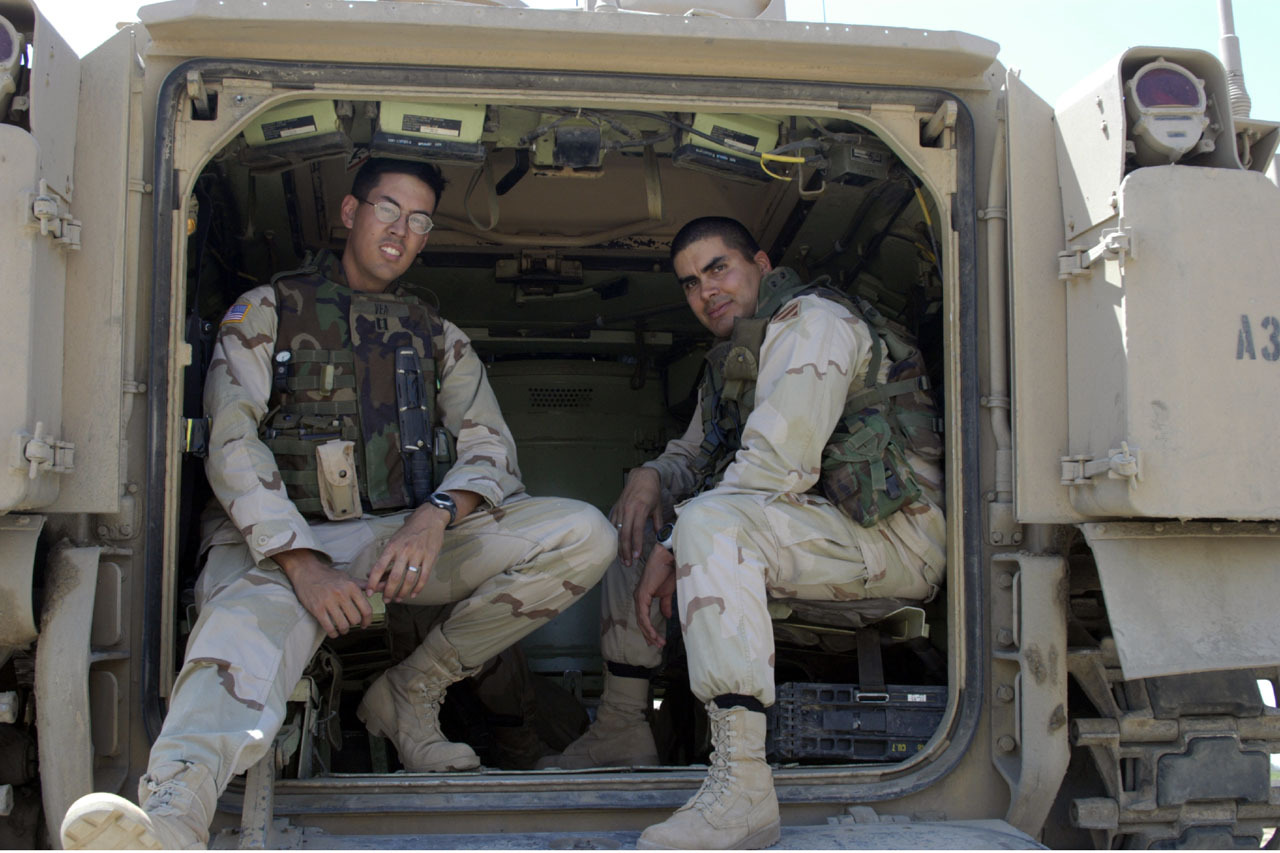 |
| The cargo hold of the M2A2 Bradley Fighting Vehicle is a tight fit for six soldiers plus equipment. Taller soldiers have an exceptionally difficult time riding in the vehicle. | |
I, personally, am a Signal Officer, a member of the combat support arm of the military. My job consists of providing communications expertise and support to whichever unit I am assigned. As with most combat service support soldiers, the last time I really underwent any focused combat training dates back years. Merely going to a range and qualifying on my weapon annually hardly constitute an equivalence of professional combat training as is expected from service members in the infantry, armor, or field artillery to name a few. Thus, one might ask just what business I have taking a seat on a combat patrol? In order to provide better communications support, one must see firsthand what the mission requires along with assessing the strengths and weakness of the present status quo. Hence, I join platoon level patrols with the soldiers from various companies in my unit to get a better feel for what they do and experience. On these patrols, I have been both an observer in the M1114, a dismounted infantryman in the back of the Bradley, a traffic controller and simply an extra man to pull perimeter security. While I am no stranger to leaving the FOB, my experience in sector by no means compares to that of the combat arms soldiers that go out daily.
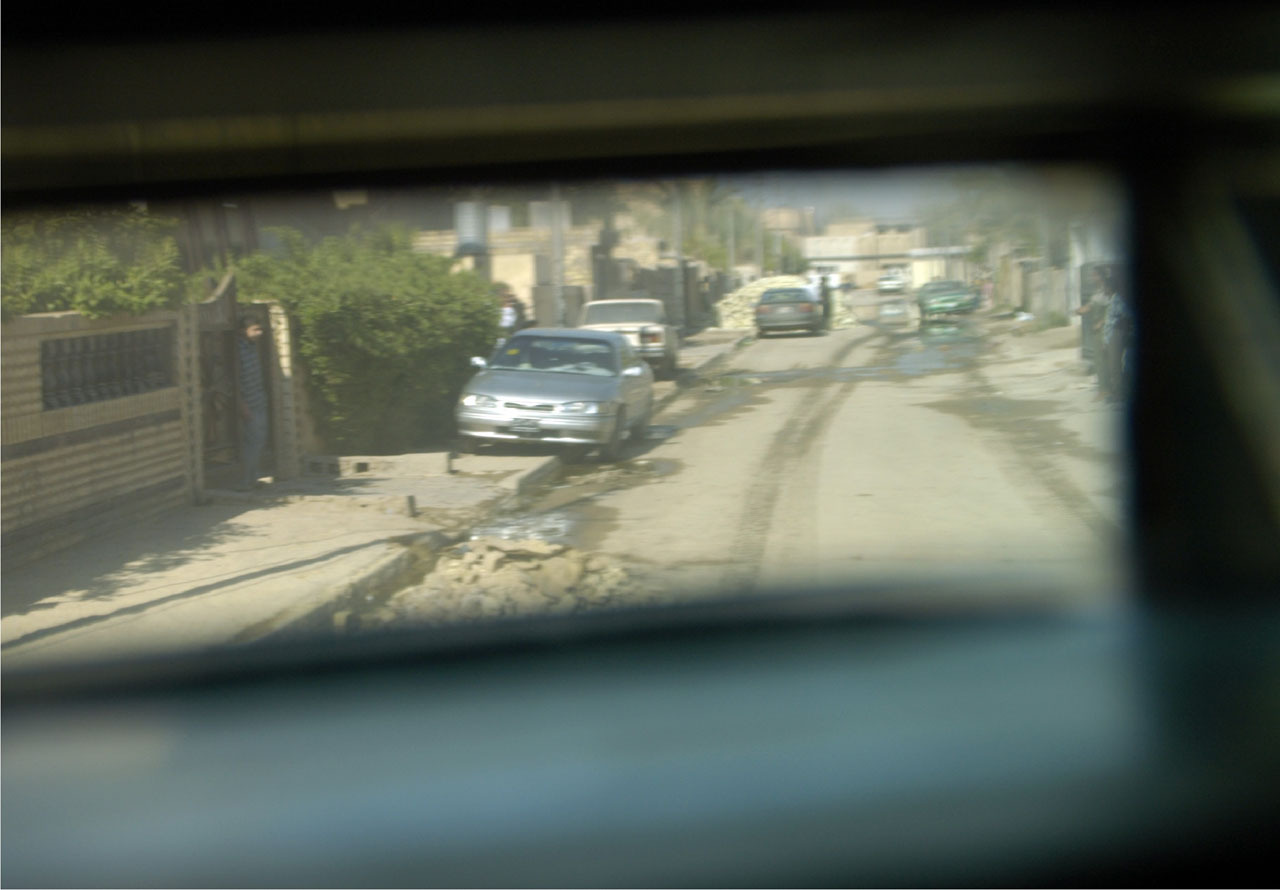 |
| The prismatic effects of the viewports offer a small, distorted view to the outside world. Visible here is a neighborhood street from the Al Furat district in Baghdad. | |
Just what is it like to patrol in the Bradley? First imagine you are sitting inside a small steel box in the summertime without any air holes. Temperatures are already reaching 127 degrees Fahrenheit and the hot months are still two months away. You have five, tiny periscope view ports about five inches wide and two inches tall, which are generally your only source of light and the only way to see what is going on. Now vibrate the box really fast like an industrial strength washing machine that is incredibly off balance. For noise, turn on a lawnmower and place it inside the box to reverberate with you while having neighborhood children beat the outside of the box with pots and pans. Occasionally mash your head into the walls and roof to simulate the bumpy ride. The only time you come out is every hour or so to conduct a foot patrol or sweep for IEDs (Improvised Explosive Device). Repeat this process as necessary until the mission is complete.
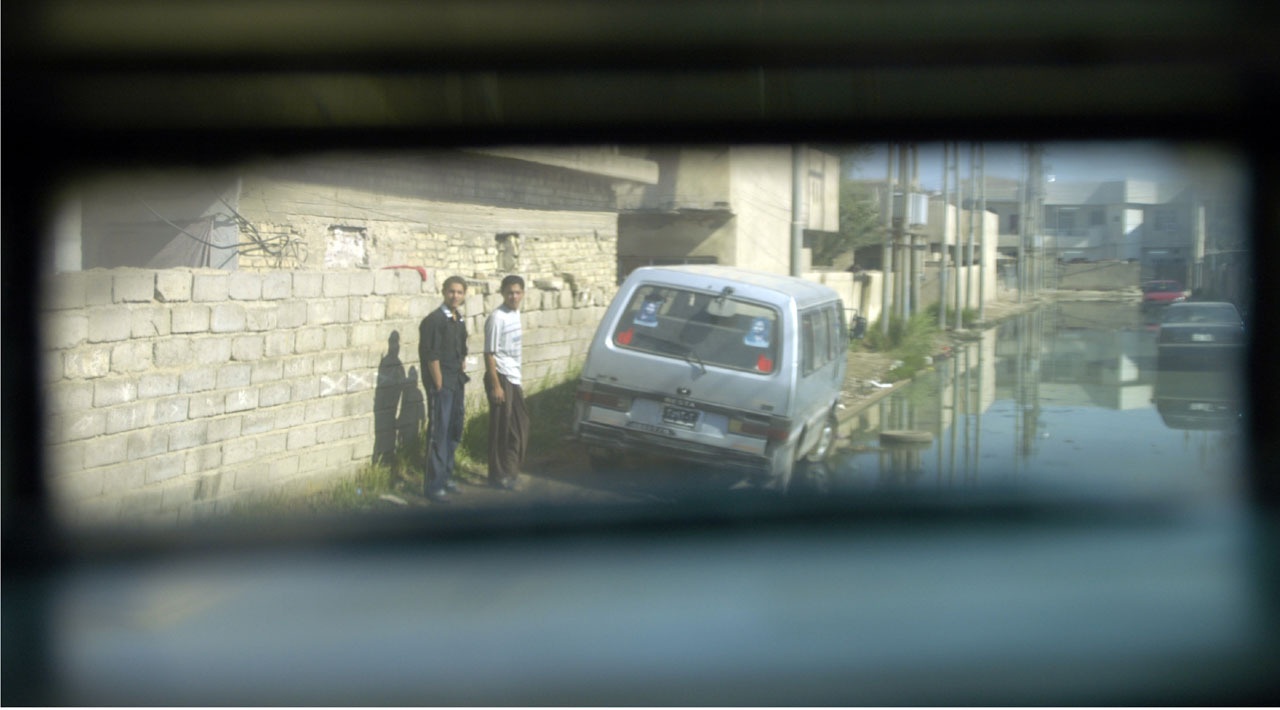 |
| The Baghdad suburbs are often flooded with raw sewage after the Iraqis allowed the treatment plants to fail. Despite the uncomfortable nature of the Bradley, a ride through sewage always trumps a foot patrol. | |
It is disorienting at first, to be a dismounted member in the rear hold of a Bradley. For the duration of the ride, you strain to look out the view port to get a feeling for where you are or ascertain the situational environment. Focusing through the little window takes effort as the Bradley bucks and rumbles across streets, fields and the rubble strewn throughout Baghdad. The experienced soldiers are readily identifiable. They sit in one of two most common postures – sullen and weary or stretched out relaxing as much as possible. Regardless who they are, everyone is just waiting for the next SIGACT (significant activity) to take place, usually just complacently accepting that sooner or later, that ramp will open up to some unexpected danger. There is a sense of helplessness to riding in the back of the Bradley in sector. Modern variants of IEDs tend to be crude shape-charges (specially built explosives designed to deliver all their force in a single direction) or multiple strings of artillery shells rigged together for a bigger blast. Over the years, the insurgency has experimented with various IEDs and seized upon the discovered weaknesses of American vehicles, capitalizing on them with carefully placed and timed explosives. Lately, the insurgents have managed to put together a crude, shape-charge, armor penetrating explosive that directs all of it’s explosive energy in a focused direction intended to push a molten slug of steel into our armor. Regardless of the cat and mouse game of better IEDs versus better armor, there is nothing the American soldier can do inside the hull but wait.
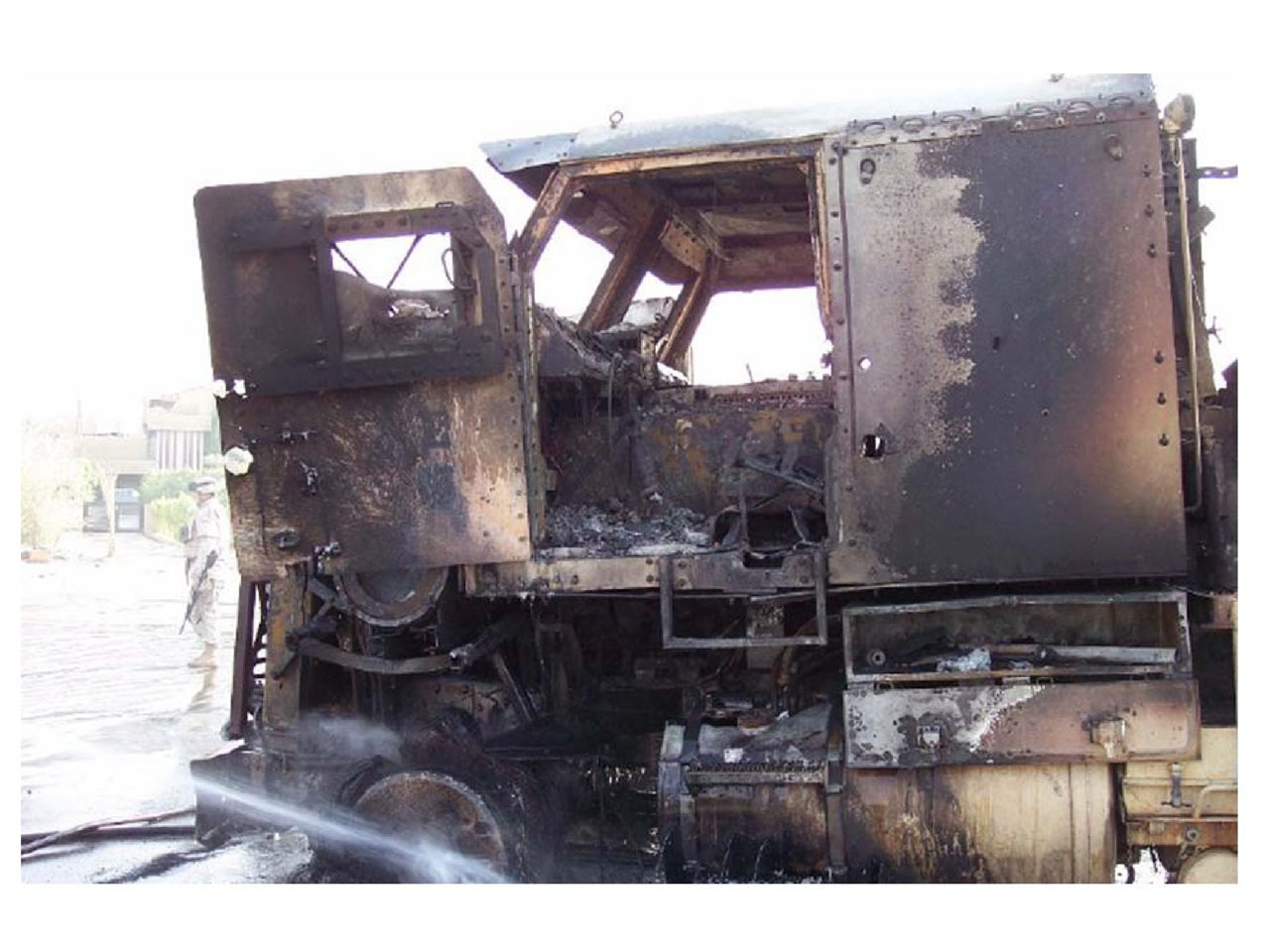 |
| It is not uncommon on Route Irish to find destroyed vehicles along the side of the road. | |
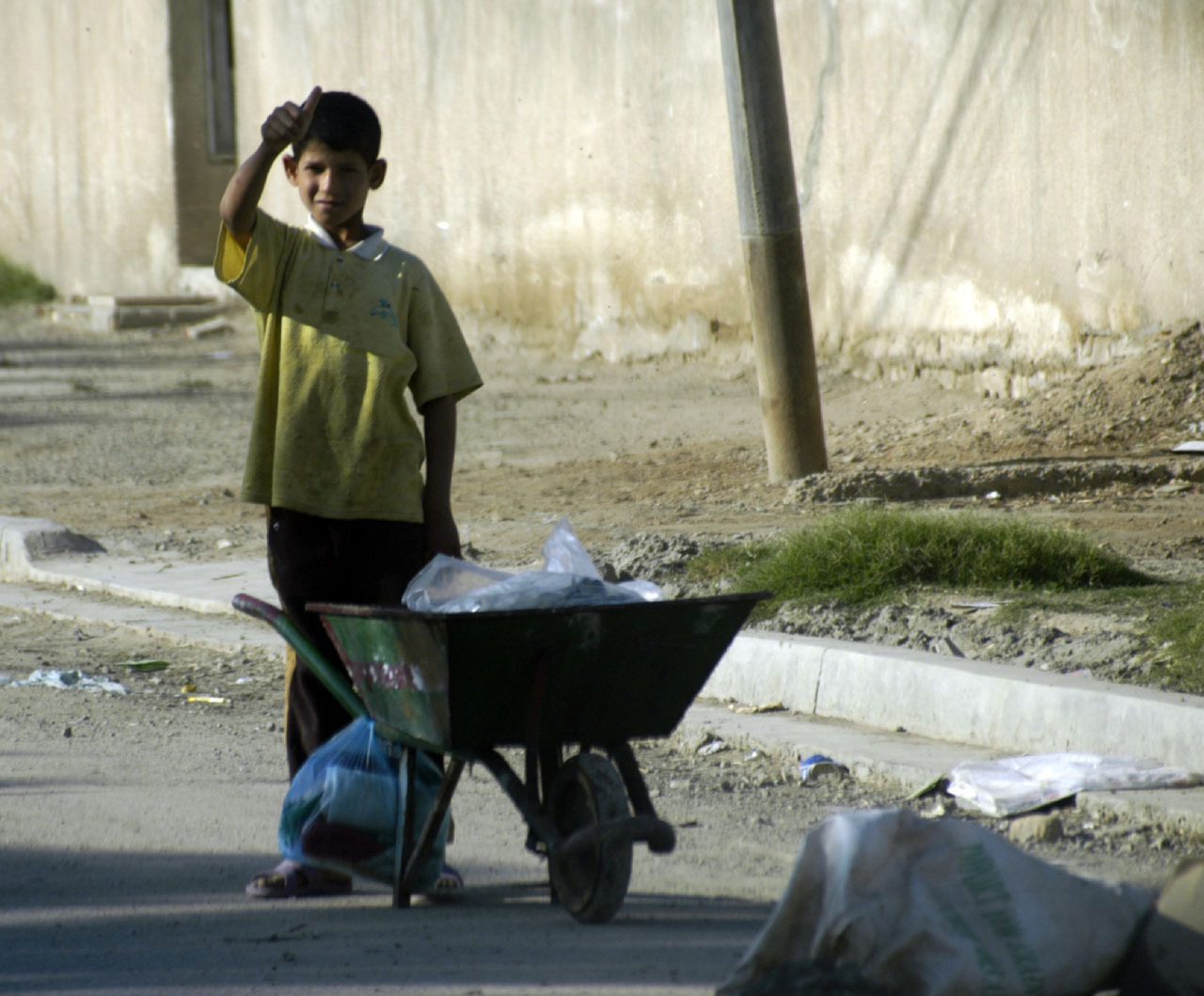 |
| Children are the future for Iraq. They represent the first generation to mature without preconceived notions of the absolute oppression which has broken the spirits and wills of so many adults. | |
Eventually the ramp drops, accompanied by the mechanical whine of the system terminating and the thud of heavy steel clanging against the ground. After nearly an hour of sitting in near darkness, the glaring brightness of the desert sun blinds everyone inside momentarily. Nobody inside really knows what is about to happen unless it was a planned stop. While there is an intercom, the vehicle rumbles so loudly many of the dismounted soldiers cannot hear it. Yet as soon as the ramp drops, everyone pours out the back and quickly assumes a security position to gain situational awareness as their sight returns. Reasons for dismounting abound, but the platoon can identify the current scenario within seconds. Moving a broken vehicle off the road? Performing a cordon and search? Engaging the local population to gather information? Establishing security around a suspected IED to keep people from getting injured? Setting up a temporary traffic control point for inspecting vehicles for contraband? Conducting a foot patrol?
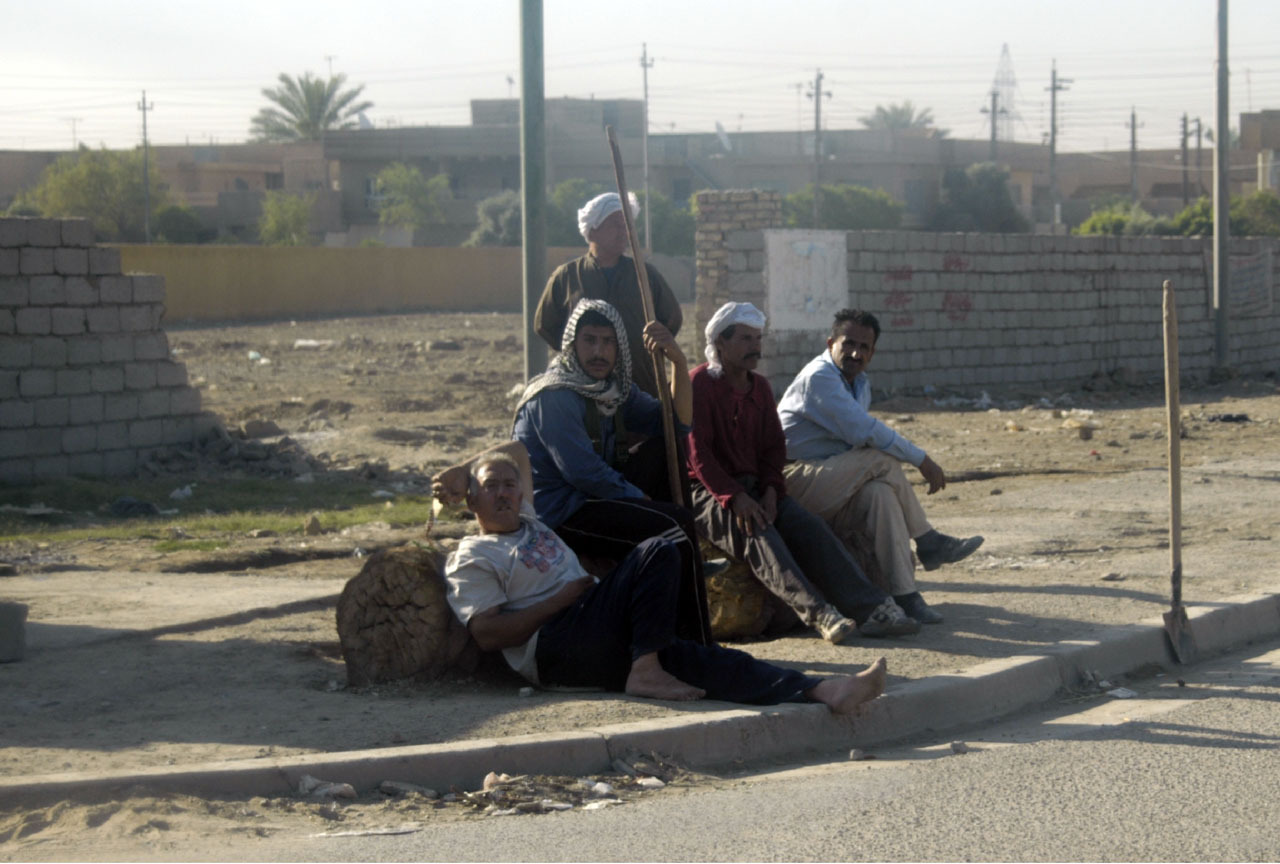 |
| So many individuals seem harmless at first. Experience in sector reveals the lookouts and suspicious mannerisms. Trust in your fellow mankind dwindles for the soldier as time wears on. | |
The foot patrol may be one of the most psychologically stimulating events – although most have grown numb to its effects over time. There are so many variables to consider when analyzing your surroundings. Are kids present? Usually just prior to an attack or an IED emplacement, the kids just vanish. Still, children are not a true indicator of safety as a recent suicide bomber detonated himself early and vaporized two kids beside the vehicle. Their stuffed animals lay burning after flying through the air and coming to rest beside the intended American target, an image forever burned into the soldier’s memory. Of course, when kids abound, they are typically following us and asking for dollars or candy. Some ride their bikes dangerously close to the tracked vehicles no matter how many times we redirect them to the sidewalk. There are other indications of potential threat. Is the glare from a shopkeeper malicious? The loud rumble of the diesel Bradley or the whine of an Abrams’ turbines are enough to agitate anyone. Is he making a cell phone call harmlessly? Or is that an alert to an insurgent for a VBIED (vehicle borne IED) strike? Could he be calling in a disposition report regarding how American forces operate to improve their ability to kill us later? Doors and windows open which immediately draw your attention. Yet you cannot simply point your weapon at them – for all intents and purposes the target would just be an innocent Iraqi civilian and they do not deserve the hazards of reckless suspicion. However, the questions remain, am I about to receive small arms fire from above? Have a grenade dropped on me? Could this street quickly become the kill zone for multiple directions of fire? Urban combat operations are much "easier" when open combat is the modus operandi, but when combating an insurgency it becomes next to impossible to root out the dangerous folks until you are already receiving their fire.
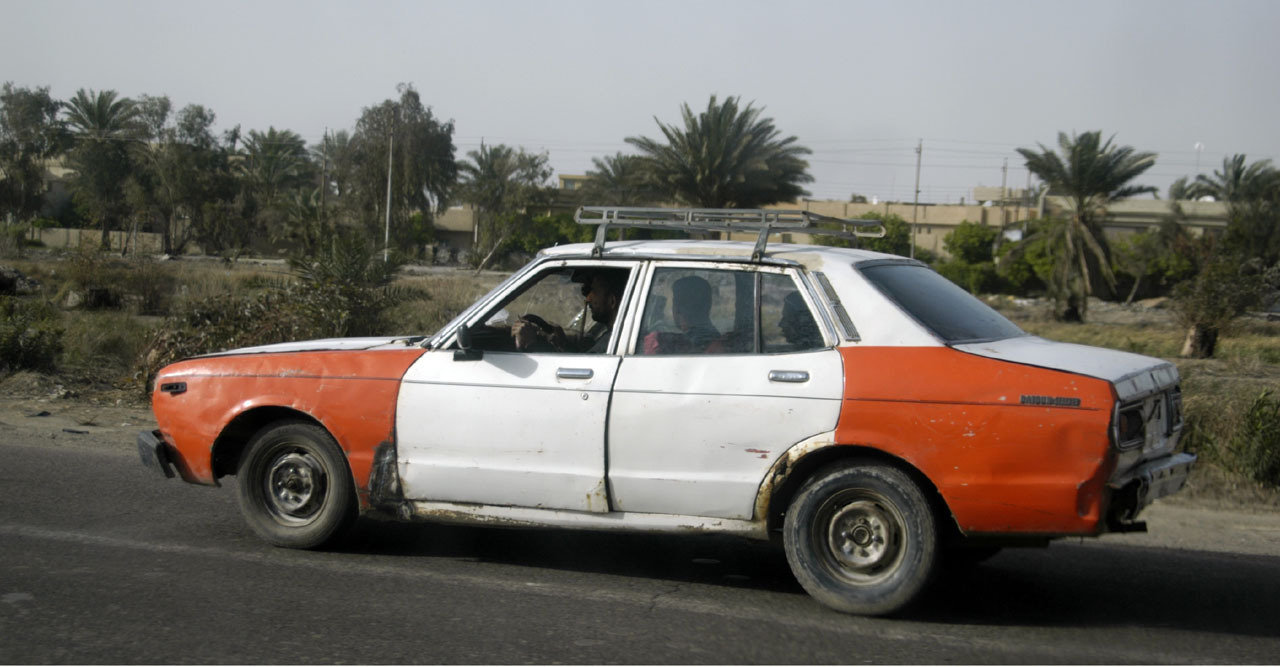 |
| Often, the most decrepit vehicles become VBIEDs. A new trend revealed the insurgent would sell a normal citizen a VBIED unbeknown to the buyer. Following the sale, a triggerman would follow the car and detonate the buyer and car when it approached a lucrative target. | |
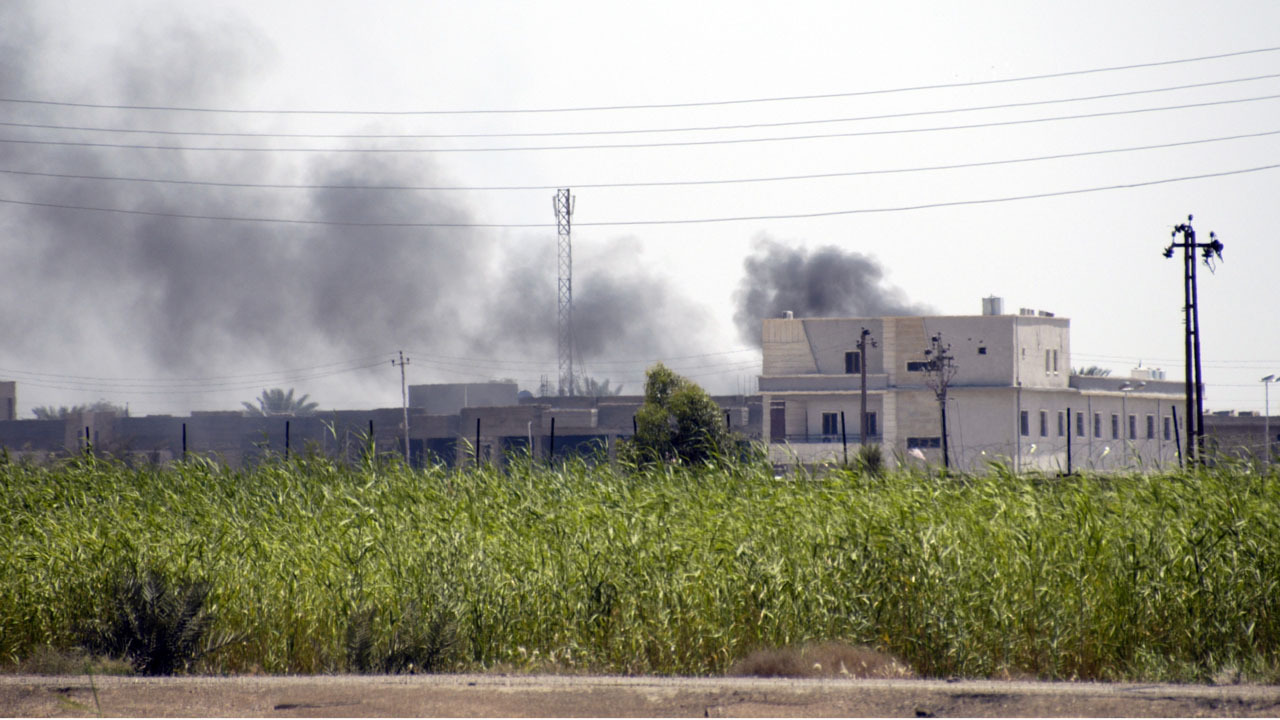 |
| In the distance, smoke from a latent IED lingers in the air. | |
Vehicles pose the greatest threat with their ability to conceal munitions and rapidly deliver a large explosive yield. Every vehicle that turns a corner or begins to approach down the road could be "the one." Most respond to a quick hand gesture to stop and turn around. Others continue to race down the road until a weapon is aimed at the driver. Even then, the decision to shoot lies in a window of only a few seconds. I myself was in the process of raising my weapon to disable a driver when his gestures and broken English asking if the road was closed came at just the right moment to clarify his intention for approaching. Cars are not the only threats; explosives have even been discovered packed into the tubing of bicycles. It is true that our armored vehicles will protect against most of the attacks delivered by the insurgency, but the vehicles serve little good to the dismounted soldiers. The body armor does work against small arms as lucky soldiers have been shot in the chest with sniper rounds and walked away with nothing more than bruises and a shaken psyche. But the plates and flak pads stand little chance of stopping the flechettes from a Chinese rocket, the organ-crushing pressure wave from a mortar round or the burning fragments of an exploding car. Everyone and everything is a potential threat yet the rules of engagement dictate a passive-but-ready posture. The soldiers that patrol these streets daily have memorized them intimately and readily detect faint nuances – the out of place car, box or person – that may threaten their safety. But that knowledge comes with a price tag of time, everyone spends nearly eight hours a day in sector to accrue each soldier nearly 100 patrols per month. Patrolling the streets of Baghdad is a mentally demanding experience.
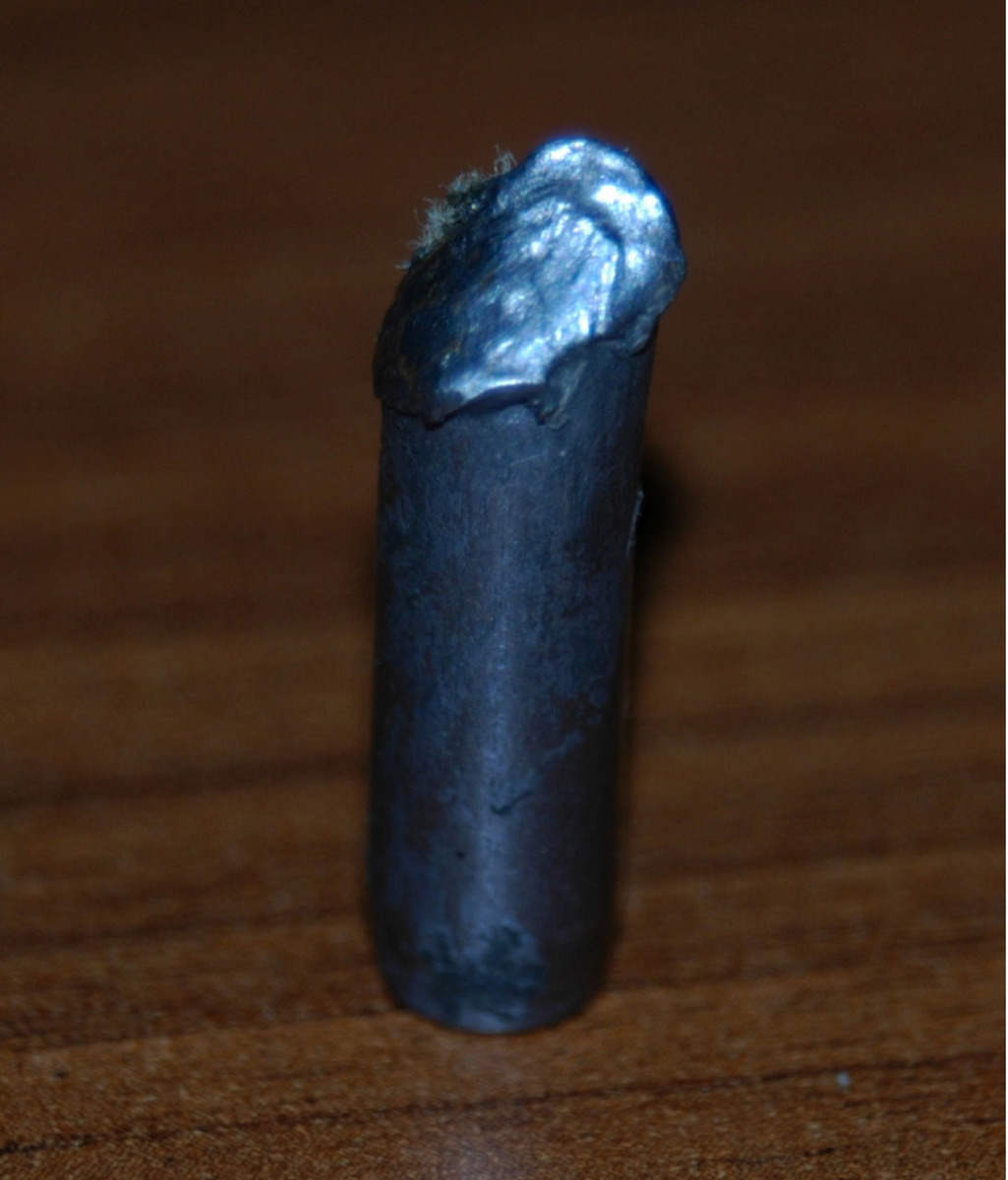 |
| Thanks to protective body armor and a bit of luck, a soldier took this round to the chest and survived with only bruises. Snipers are a cyclic threat that emerge against the coalition unpredictably. | |
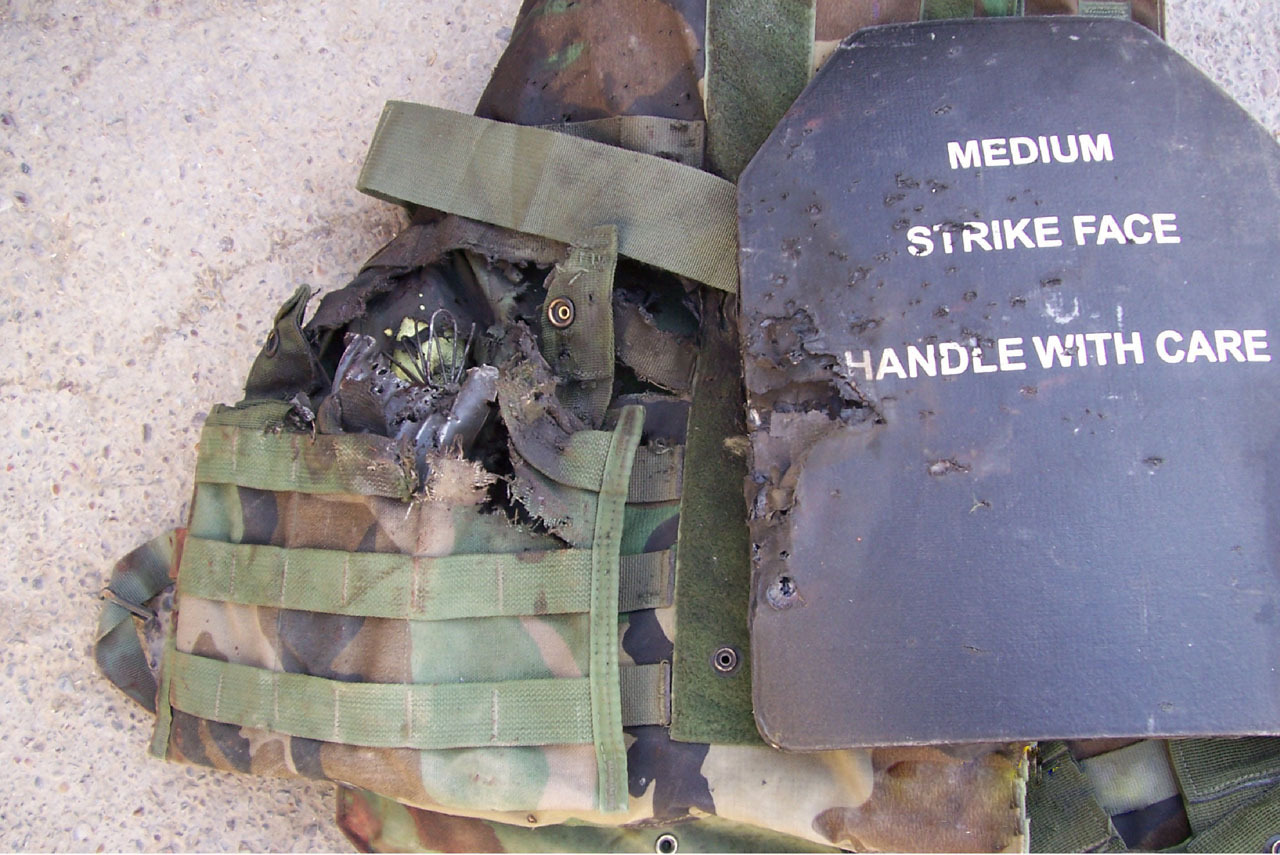 |
| Unfortunately, body armor cannot protect soldiers from all types of attack. | |
There is a difference between conducting dismounted patrols in the presence of armored vehicles and staying mounted in the HMMWVs. First and foremost, visibility is so much better that each soldier’s situational awareness is dramatically improved. There is still a small feeling of helplessness as your only defense comes from your armor – thick steel plates, multi-layer polymer windows and your turret gunner with his .50 cal or M240 machine gun. Your own weapon may have a round in the chamber and be ready for use – but the doors and windows remain locked tight, maintaining a seal to provide pressure wave and fragmentation protection in the event of an explosion. Having to sit through a moment of crises until the opportunity to dismount presents itself is frustrating. A local national’s automobile that was racing towards my own vehicle was disabled by a burst from our turret gunner before it reached us. During that entire passage of slow motion time, every passenger was aching to defend himself … but had to wait until the M1114 moved away from the potential kill zone before dismounting to conduct security operations. All this time, the turret gunner is exposed and in danger of direct fire. Another patrol experienced a VBIED actually impact the HMMWV but fail to detonate the propane tanks and artillery shells in its back seat because the suicide driver dropped his grenade without pulling the pin. The danger of the M1114 patrol is that insurgents target this vehicle the more than others as they are most likely to succeed in destroying a HMMWV than a tracked combat vehicle. At the same time, however, the soldiers have the visibility of a foot patrol and the protection of their armor so they tend to be more lighthearted considering the task at hand. Rather than sit sullenly in the darkness of a Bradley, they chatter constantly about anything and everything to keep spirits up. From an M1114 patrol, you can really get a good glimpse into the surrounding area and see Baghdad.
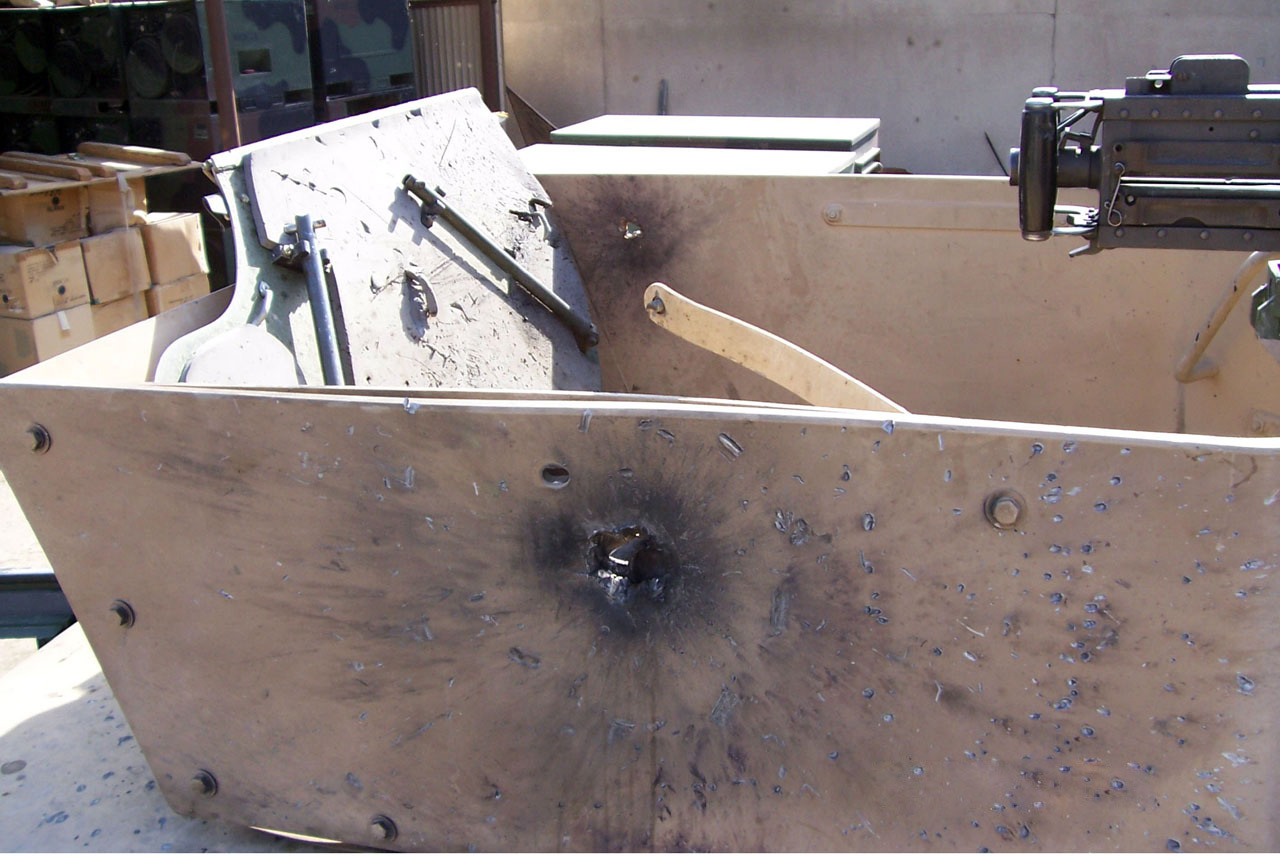 |
| A lucky shot with an RPG threatens the safety of soldiers even within their vehicles. | |
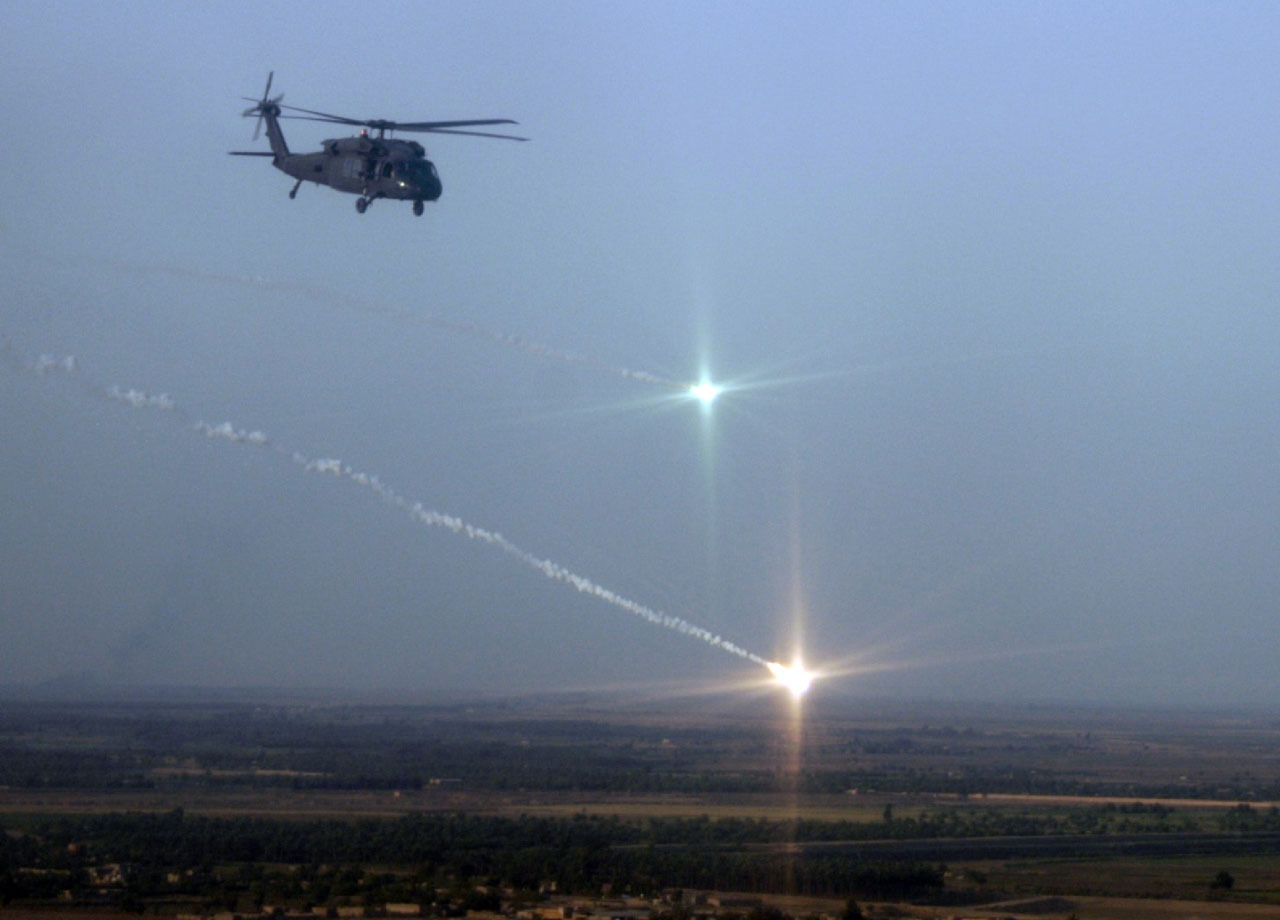 |
| The UH-60 Blackhawk drops flares as a countermeasure to threats. | |
When it comes to seeing the countryside, there is no better vehicle than a helicopter. The UH-60 does not feature much for armored protection to the occupants. Rather, nap-of-the-Earth flight at 150 mph keeps the aircraft’s exposure time to any given location short. As a passenger on board a UH-60 Blackhawk, the thrill of flying and the view generally overtake any suspicions of danger. From the air, the size of the sewage pools that plague the city become apparent. Architectural similarities blend and make the economic divide visible between those in dilapidated mud huts and fenced communities. Depending on the flight path, you can observe the dusty tan of the city fade into lush, green farmlands reminiscent of the Midwest, United States. Truly from the air, much of the danger seems to dissolve. Safe that is until the flares pop forward from the helicopter as a defensive measure against heat tracking weapons. There is surprise enough when the trail helicopter drops its flares. But those from the helicopter you occupy will certainly catch you by surprise as the "whoosh" and sizzle of its ejection are clearly audible over the rotor wash and the brightness of the burning material draws attention away from the view. A quick glance over your shoulder and you see the machine guns sweeping back and forth over the terrain below and the imminent danger of the situation comes back. Flares continue to drop periodically throughout a flight. Are they in response to an actual threat indicator? Or is that just standard procedure? Nobody in the passenger section ever really knows as we do not wear communications headsets like the crew. Only the occasional "plink plink" of a small arms round impacting the helicopter lets you know which flares are preventative and which are emergency.
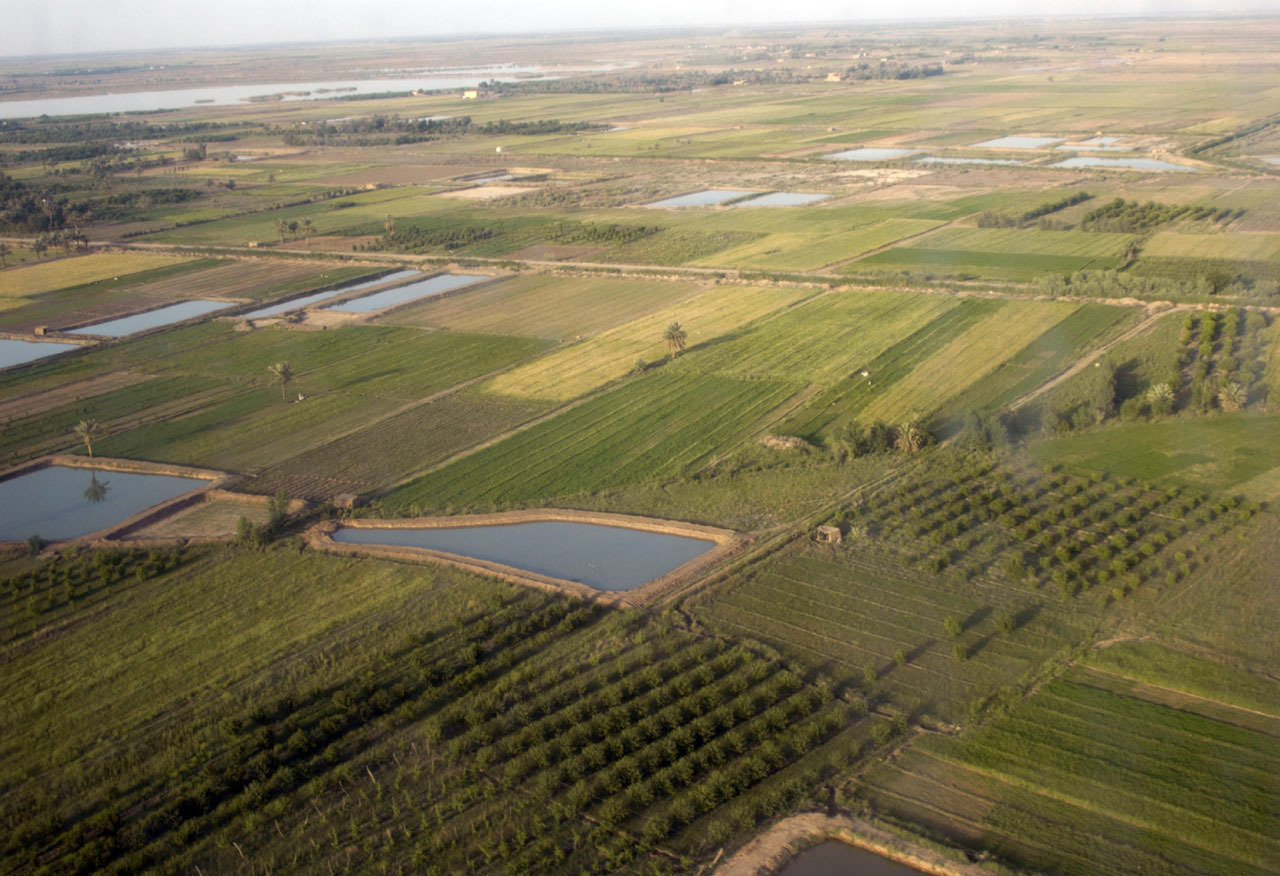 |
| Outside of the metropolitan area, Iraq is surprisingly fertile. Seeing these fields, fed from the rivers, expand outward beyond the horizon lends credence that despite the deserts, Persia was once the cradle of civilization. | |
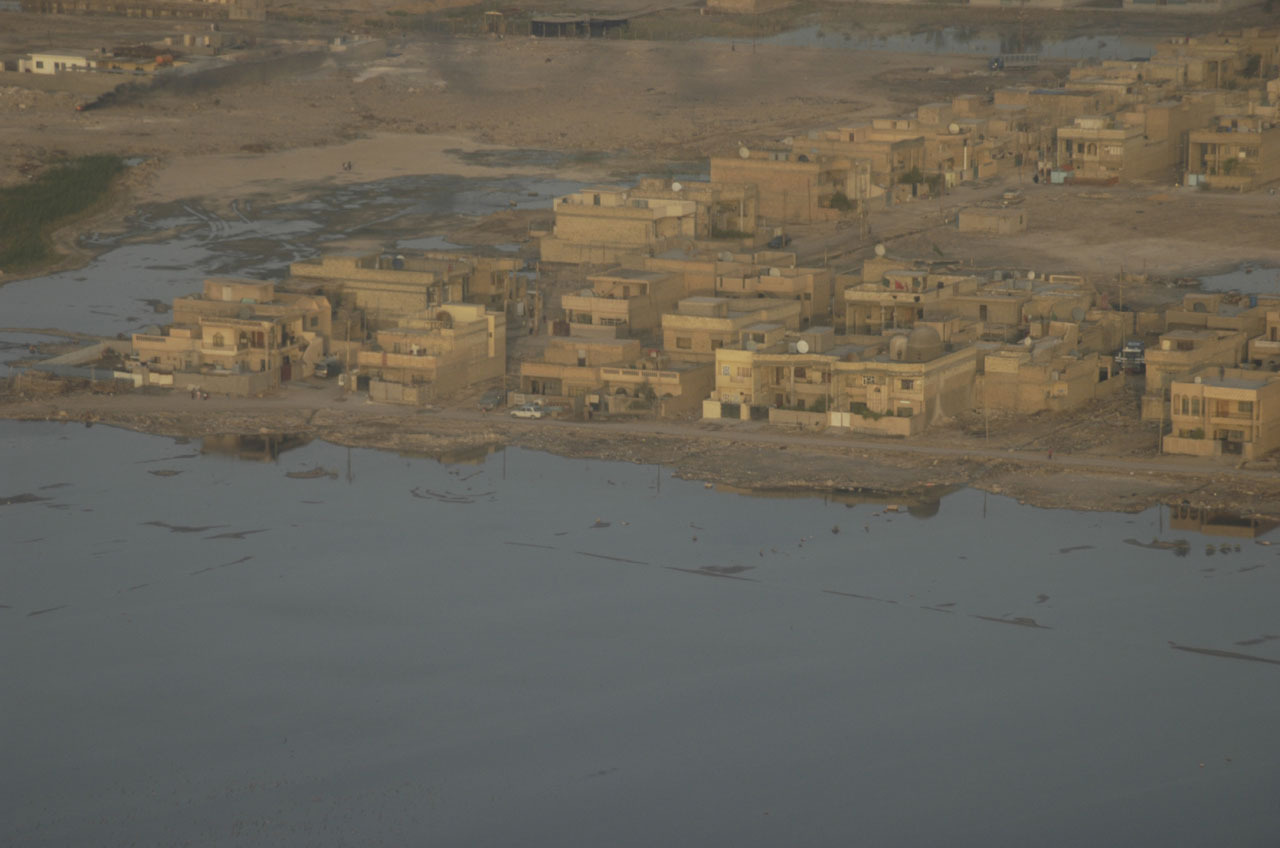 |
| From the air, the architecture blends together both in form and color. Only the residual sewage, laundry and occasional automobile break up the scene. | |
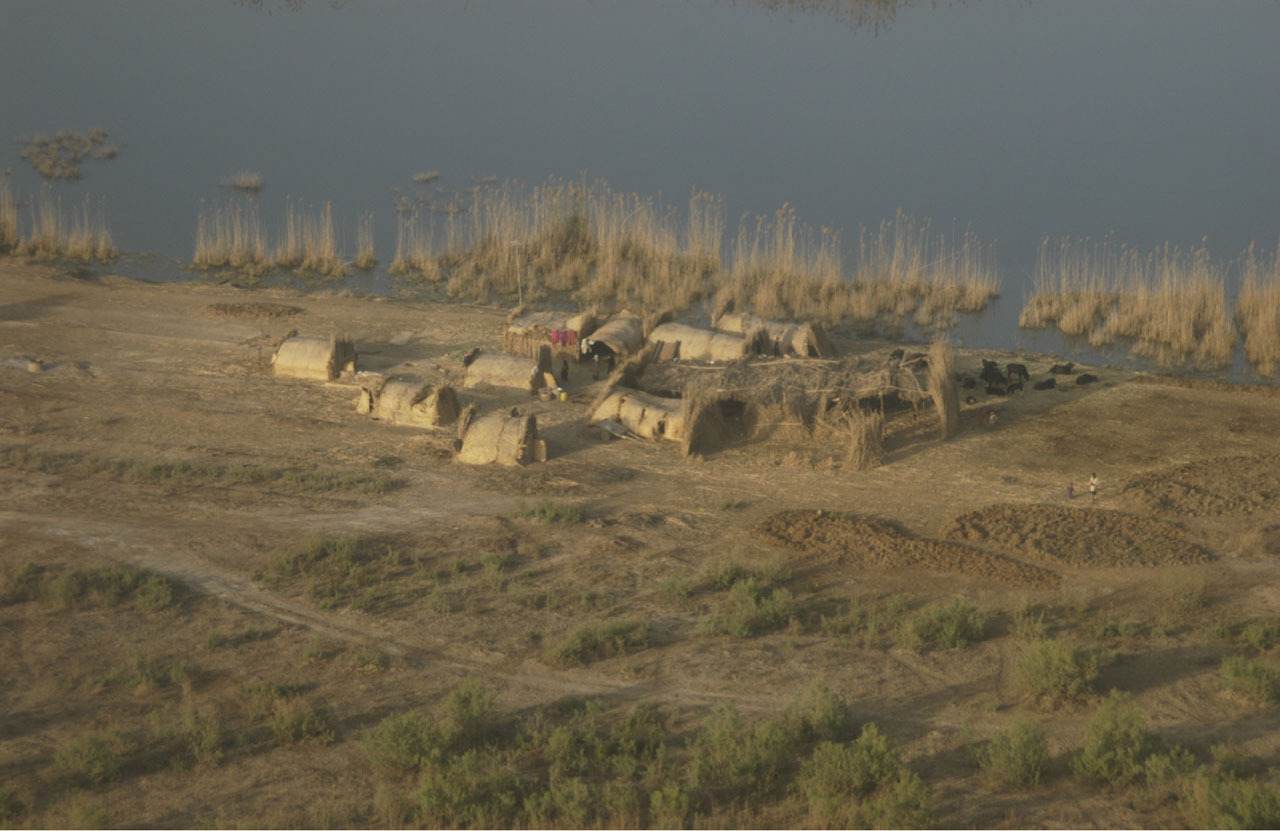 |
| Crude, makeshift homes are not exclusive to the rural environment. Similar builds to this one can be found constructed right beside an expensive home in downtown Baghdad. | |
No matter how much armor surrounds us, how fast we may fly or how much firepower we bristle with, soldiers are always in danger of an unseen foe firing from an alleyway, rooftop or darkened window. There is nothing more somber than holding a memorial service for a fellow brother in arms. A friend who just yesterday was smiling and telling stories of home, through no fault of their own now lies amongst the fallen. A memorial service is a sobering reminder that you must remain vigilant if you are to return home safely.
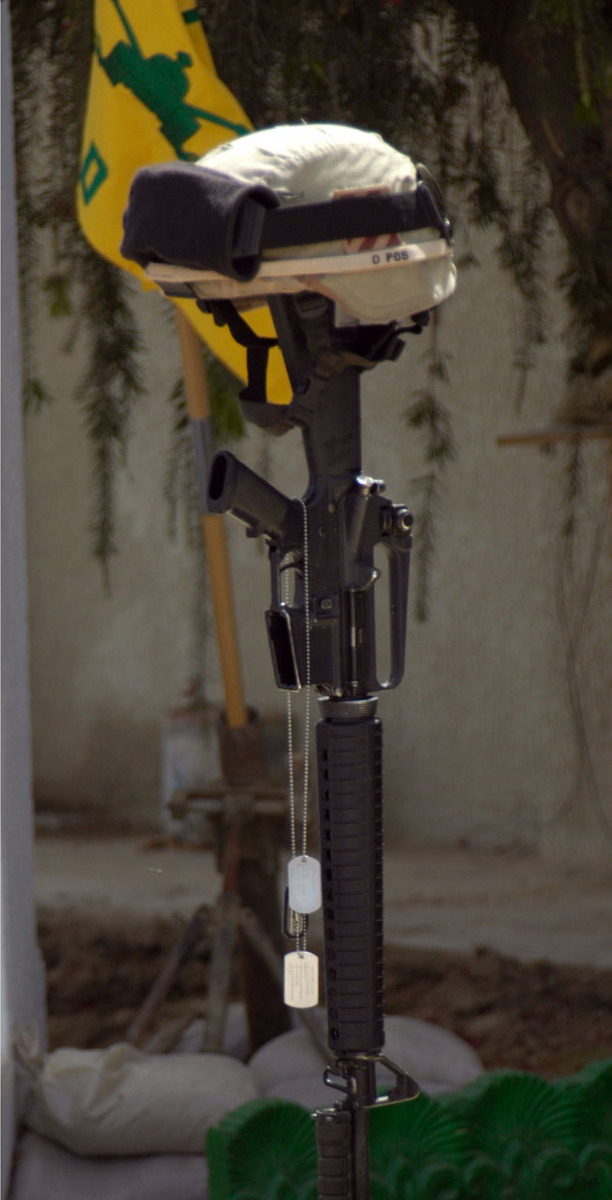 |
| Be thou at peace friend. | |


